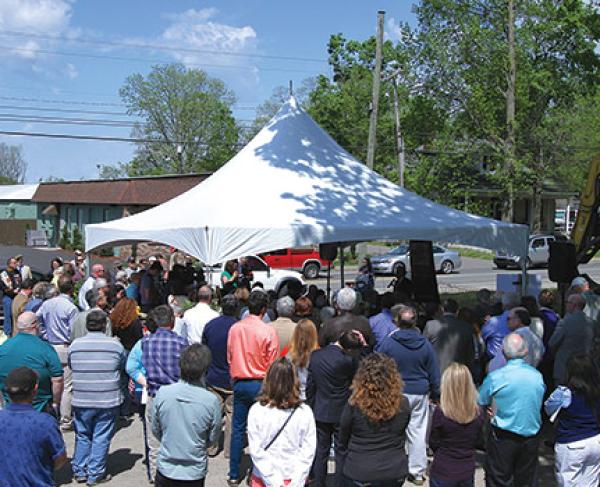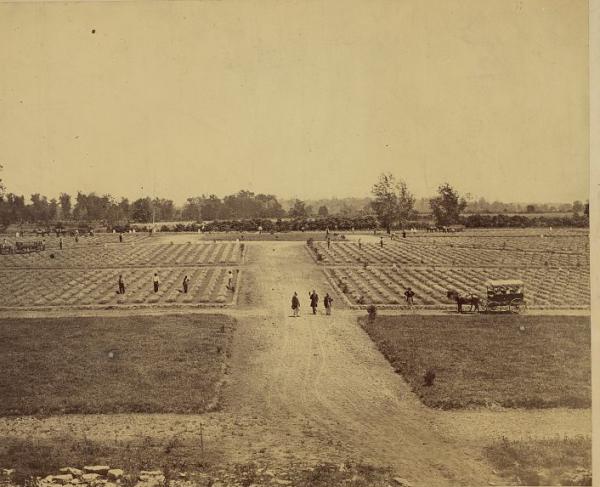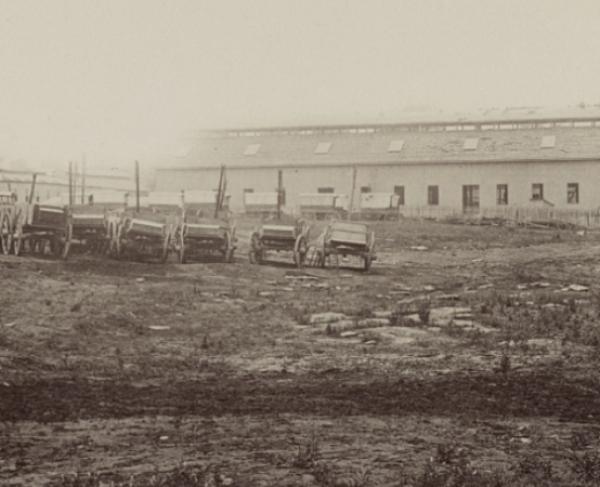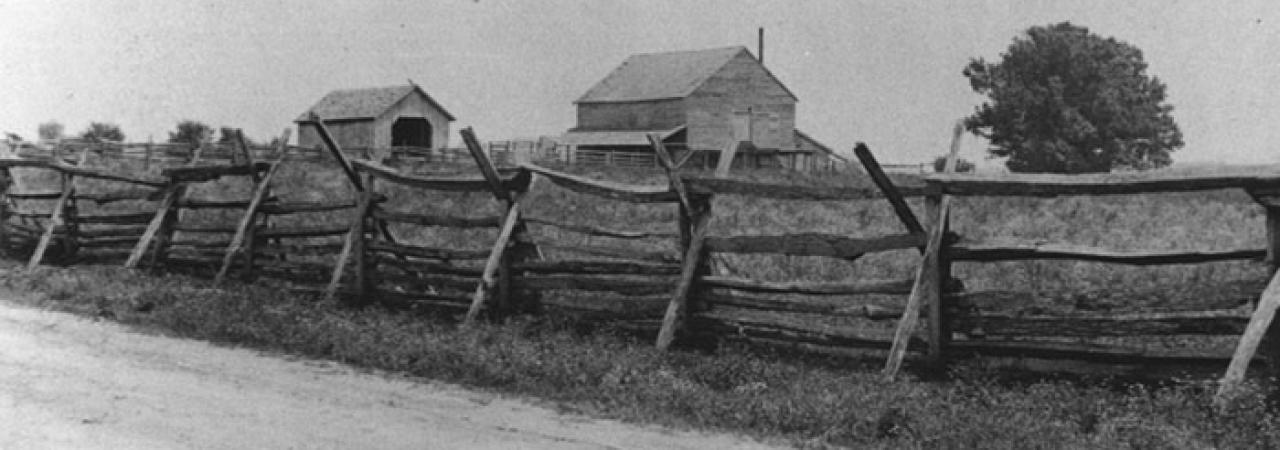
By Thomas R. Flagel
One hundred and fifty years ago, Carter Hill was visible for miles, as were the eponymous family’s large brick homestead and seven slave cabins, its nearly treeless summit crowned by a cotton gin. Today, that once mighty rise seems to sink from the overbearing weight of auto repair shops, strip centers and scores of suburban houses. But beneath the concrete on those once-pastoral slopes is some of the most hallowed ground in all of American history. On November 30, 1864, more Americans died on and around Carter Hill than were killed on Omaha Beach on D-Day — a direct result of one of the Civil War’s largest frontal assaults. Unbeknownst to its witnesses, the Battle of Franklin would also be the last major Confederate offensive of the war.
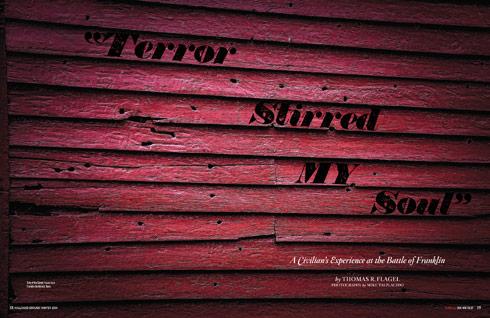
On the eve of the fight, 19-year-old Frances “Fannie” Courtney, who lived on the outskirts of Franklin and within sight of the Carter farm had reason to believe the worst of the war was over. Her native Middle Tennessee had endured nearly 200 military engagements in 1862 and 1863, caught between two nations vying for the region’s abundance of grain and livestock. Franklin itself had changed hands more than a dozen times. But by 1864, it was firmly under Federal control, anchored by a chain of fortifications linking Nashville to Chattanooga and beyond. Although her brother and cousin had joined the Confederate army at the war’s outset, Frances and her widowed mother remained devout Unionists. Exactly where her brother and cousin were, she did not know, aside from the fact they were likely still alive and riding with Nathan Bedford Forrest. As for Fannie, she resolved to simply care for her mother and younger siblings, tend to their home on the corner of Fifth and Church Streets and hope that the war would soon end.
This would all change on an unseasonably warm November day, when dozens of Union soldiers began filing past her home, having slipped away in the night following the engagement at Spring Hill. “The retreating army arrived at this place,” she observed, “tired and many almost exhausted.” They were the lead columns of some 20,000 Federals under Maj. Gen. John Schofield, sent by Maj. Gen. William T. Sherman from as far away as north Georgia to stop Confederate Gen. John Bell Hood and his equally large force from reaching Nashville and its bursting warehouses. She recalled:
“We felt great uneasiness of mind, fearing that there would be a great battle. We asked of almost everyone passing if that would be the case. They replied, ‘We will only skirmish with the Rebels till we get our wagon trains away, and then we will invite them to Nashville.’”
Regardless of the men’s optimism, Fannie recalled that “terror stirred my soul.” She had a right to be worried. By heading to Franklin, the Union boys had wedged themselves into a horseshoe bend in the Harpeth River with no way to cross. The most accessible bridge had been destroyed, and the Nashville & Decatur Railroad bridge could not accommodate wagons.
While his engineers hurried to rectify the issue, the rest of Schofield’s army augmented old trenches from their 1863 occupation, creating a mile-long arch of shallow but protective ditches south of town, with sections further shielded by tangles of felled trees. Atop the parapets went head logs, parts of nearby cabins and barns, even iron chains and field plows. “You would have been astonished,” recalled Miss Courtney, “to see how quick the work was completed, and with what strength.” There was only one opening, at the center, where the Columbia Pike crossed over Carter Hill.
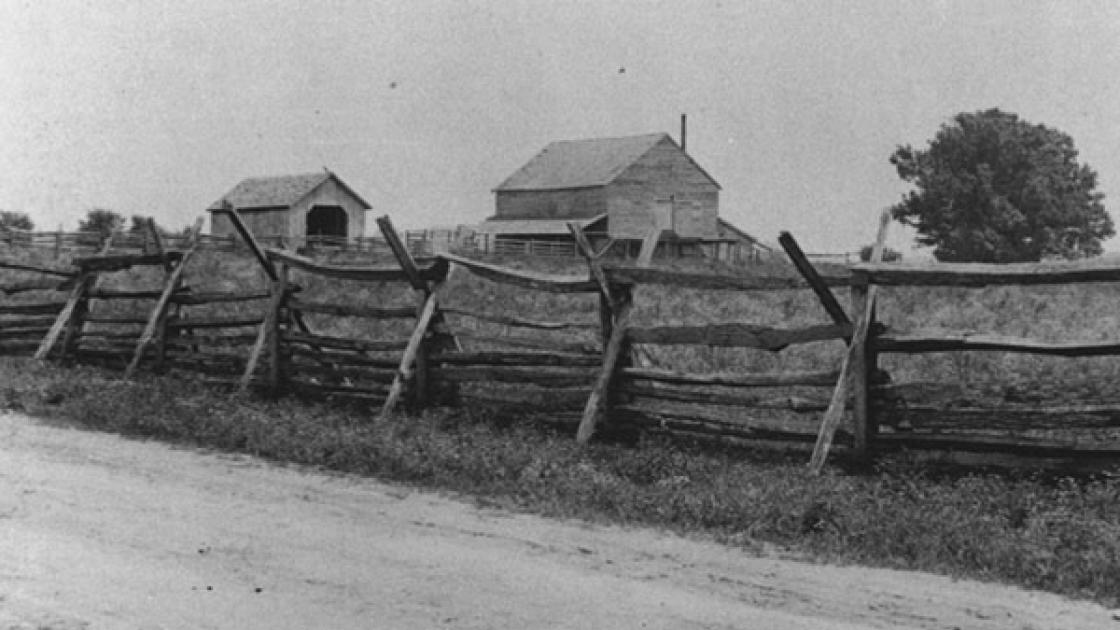
Still, the center may have been the line’s strongest point. A network of obstacles blocked part of the pike. Artillery batteries flanked both sides. To the rear, near the Carter House, waited more than a brigade of reserves, enjoying a self-appointed break from an all-night march. Next to the breach, troops tore timbers and weatherboards off the Carter cotton gin and threw the jagged lumber on top of the works. By the time they were done, all that was left of the gin was a giant, macabre skeletal edifice.
A half-mile south of all this, Union Brig. Gen. George Wagner and around 1,200 men monitored the 20,000 Confederates collecting on the horizon.
To more than one bluecoat, all this labor seemed a bit superfluous. This was late November, and the dusk of afternoon was at hand. Even the daring Hood would not gamble his newly acquired Army of Tennessee — the last large, mobile fighting force at Richmond’s disposal — to the long odds of a night battle. The Federals also had some 36 artillery pieces lining their breastworks, while most of Hood’s guns were still on the road farther south. Furthermore, even the greenest of recruits could see that the Confederates would have to traverse two miles of open ground just to reach the Union line. An attack would be folly.
Then at 4:00 p.m., the unthinkable happened.
“I was sitting at the dinner table when I heard the roar of artillery,” Fannie remembered. “I ran to the yard to listen. There was a yell, the Rebels made a charge along the whole line.”
Against the wishes of several subordinates, Hood had ordered nearly all his available forces across a distance twice as far as Robert E. Lee’s men tried on the third day at Gettysburg. Perhaps predictably, the results were equally catastrophic. Pickett’s Charge cost the Confederacy approximately 1,200 dead, and Franklin saw well more than 1,700 killed. But while Lee’s divisions in Pennsylvania had pulled back just 15 minutes after initial contact at the Bloody Angle, Hood’s men were locked in combat for nearly five hours after reaching Carter Hill. The Army of Northern Virginia had lived to fight on, but the Army of Tennessee teetered on the verge of utter destruction.
As they moved forward, Hood’s 30,000 men had one advantage: Wagner’s advance line of only 1,200 men, although positioned on a slight ridge, was all but untenable. As the Confederate mass surged forward, those running along Columbia Pike soon realized they could push this grand skirmish line rearward, and follow the retreating Federals into the breach at Carter Hill.
It worked. While all other sections of the main Union line held, the center broke.
Down the hill and seven hundred yard behind the line, the young Miss Courtney found herself on the receiving end of errant rifle fire.
“The bullets were falling so thick it was unsafe to remain longer. I stood within the door, and in a few minutes all was in perfect confusion. Men, women, and children were running in every direction, together with unmanageable teams, loose horses and mules.… My position was no longer safe. I hastened to the cellar with the rest of my family and neighbors who sought protection with us.”
Basements and brick homes quickly became makeshift shelters for the town’s 900 residents. Up on Carter Hill, the Lotz family had abandoned their clapboard home on the east side of Columbia Pike for the stone basement of the brick Carter House across the street. More than 20 people, including slaves, hid in the Carter cellar. Among those taking cover was Mathilda Lotz, who had celebrated her sixth birthday just the day before.
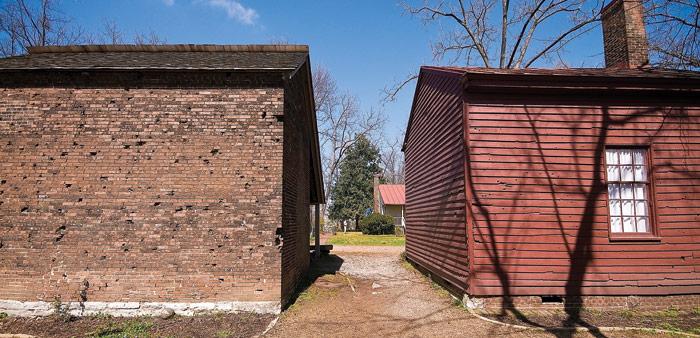
Above them, at around 4:30 p.m., swarms of bullets began to slam against the outer walls, generating cracking sounds punctuated by the shrill of shattering windows. In the yard, deafening cannon volleys and waves of rifle fire intermixed with screams of desperate men. Where the Confederates broke through, right outside the Carter House, the fighting turned hand to hand. In short order, the Federal reserves were upon them. Virtually every Confederate who made it into the breach would become a casualty.
“The charges were fearful,” said Fannie, “and made with redouble[d] fury the darker it grew.” There was perhaps 30 minutes of daylight left, but the darkness of which Frances spoke initially came from the warm and beautiful weather. Once the firing commenced, the serene and humid air trapped the billows of gun smoke in place, enveloping nearly the entire breadth of the battlefield in an acrid gray haze. If civilians could not tell what was transpiring on Carter Hill, the men fighting upon it soon lost sight of anything past a few yards.
Many of the Confederates enlisted soon realized they were losing contact with their commanders — a combination of the dangerously low visibility and the fact that their officer corps was getting scythed to pieces. Of Hood’s 99 regiments that went forward, around half would lose their commanders in first two hours of fighting. Six Confederate generals were killed or mortally wounded, among them Brig. Gen. Otho Strahl. One of the last people to see Strahl alive was a sergeant in the 41st Tennessee who was stuck outside the trenches on the west side of Carter Hill:
“It was evident that we could not hold out much longer, and it was thought that none of us would be left alive. It seemed expedient that we should either surrender or try to get away, when the General (Strahl) was asked, and he responded ‘Keep firing.’”
Soon after, Strahl received a bullet to the head. Still conscious, he was in the process of being carried to the rear when he was shot two more times and died.
In general, humans can only withstand a few scant minutes of close-quarter fighting before they feel compelled to move forward or back. At Franklin, it is likely that Confederate soldiers remained in place for an unusually long period of time — several hours — because there were so few officers left to rally them or sound the retreat.
Down toward Franklin proper, Fannie Courtney discovered another form of terror. “Soon a fire broke out in town…we thought of nothing else but being burned alive in the cellar.” At least three buildings burned to the ground before civilians and soldiers contained the flames. Simultaneously, churches, shops and homes were being consumed by yet another maelstrom, that of thousands of broken and mangled bodies. In all, more than 40 households and public buildings in and around Franklin quickly became de facto field hospitals, including the Courtney home:
“All the evening…portions of the house and the entire front yard were filled with soldiers…I heard an awful groan… and within a few yards of me a Federal soldier who, I supposed, had been wounded a short time before…. I sent one of the soldiers out to look after his comrade and to give him water. But he did not have to remain long; the wound proved to be mortal, and the poor man soon expired.”
Immediately thereafter, Frances found herself tending to a man shot through the arm.
“The main artery was cut. He was bleeding profusely. My mother had some cotton near. I poured water on the wound for some time. I then put cotton on each side where the ball entered and came out.”
What became of the young man is unknown; his comrades took him away before Fannie could learn his name. Yet in his injuries, he was not alone. Altogether, Franklin produced nearly 6,000 wounded, and another 4,000 killed, captured or missing, the vast majority of them Confederates.
By 9:00 p.m., most of the fighting had stopped. Those Confederates who could still walk started to pull back. Around midnight, Union survivors and their wagon trains crossed the Harpeth on makeshift bridges and headed for Nashville. For Frances Courtney and the people of Franklin, their nightmare was not yet over, a fact made clear when she ascended Carter Hill the morning after the battle.
“The sight was dreadful. It seemed that I could scarcely move for fear of stepping on men either dead or wounded. Some were cold and stiff, others with the lifeblood ebbing out, unconscious of all around, while others were wreathing in agony, calling, ‘Water! Water!’ I can hear them now.”
Please donate today to help secure the final tract of battlefield land at Franklin, Tennessee. Any amount you can donate to this effort will be...
Related Battles
2,326
6,252
